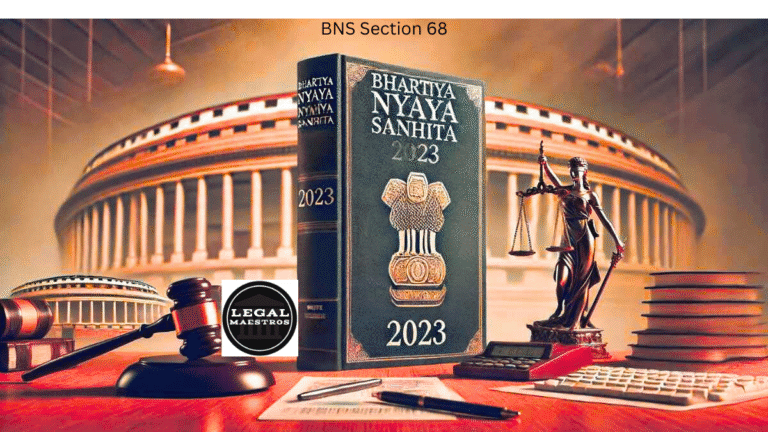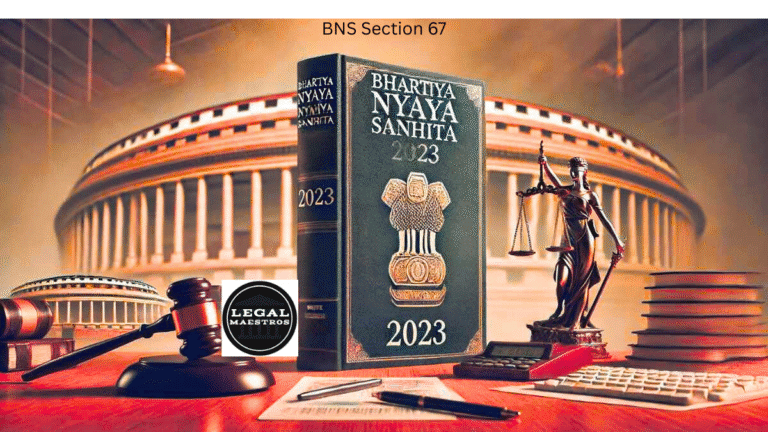
Understanding Section 33 of the Bharatiya Nyaya Sanhita, 2023: Acts Causing Slight Harm
The Bharatiya Nyaya Sanhita (BNS) of 2023, which took the place of the Indian Penal Code, includes a number of provisions that are intended to bring India’s criminal legislation into relevance with modern standards. Section 33 is one of these, and it handles situations in which an act produces harm that is so insignificant that it does not warrant legal action. The purpose of this section is to clarify the circumstances under which such actions are not regarded to be criminal offenses.
The question is, what does Section 33 state?
In accordance with Section 33:
Nothing is an offence by reason that it causes, or that it is intended to cause, or that it is known to be likely to cause, any harm, if that harm is so slight that no person of ordinary sense and temper would complain of such harm.
By ensuring that individuals are not held criminally accountable for actions that result in insignificant harm—harm that is so minor that a reasonable person would not deem it worth complaining about—this rule ensures that individuals are not held criminally liable.
For any queries or to publish an article or post or advertisement on our platform, do call at +91 6377460764 or email us at contact@legalmaestros.com.
For More Updates & Regular Notes Join Our Whats App Group (https://chat.whatsapp.com/DkucckgAEJbCtXwXr2yIt0) and Telegram Group ( https://t.me/legalmaestroeducators )
Examples to Illustrate the Point
This is an example of an accidental bump.
Ravi accidently brushes against Suresh while he is strolling through a crowded market. This causes Suresh to momentarily lose his equilibrium, but he does not fall or receive any injuries as a result of the incident. Ravi’s behavior, despite the fact that it caused some minor damage, would not be regarded a violation of Section 33 in this circumstance. This is because the damage is not significant and is not something that a person with a normal temper would be likely to complain about.
This is an example of a minor prank.
While the office is having a lighthearted party, Priya playsfully conceals the pen that belongs to her colleague Anil. Anil is temporarily inconvenienced, but he swiftly locates the pen and quickly laughs off the trick that he has just played. Given the insignificant nature of the conduct and the absence of any significant consequences, Priya’s action did cause some minor damage; nonetheless, it would not be considered a violation of Section 33 because of the nature of the act itself.
For any queries or to publish an article or post or advertisement on our platform, do call at +91 6377460764 or email us at contact@legalmaestros.com.
An Explanation of the Concept of ‘Slight Harm’ in the Context of the Law
When referring to little inconveniences or discomforts that do not result in major injury or damage, the term “slight harm” is used. It would be irrational to regard actions that are considered to be small in nature as criminal charges because the law acknowledges that people may unwittingly do minor harm to other people in their daily lives.
The standard that is used is that of a “person of ordinary sense and temper,” which refers to a reasonable person who is not too sensitive or willing to take offense easily. If the individual in question does not perceive the injury to be serious enough to merit filing a complaint, then the act in question is not regarded to be an infraction according to Section 33.
The Reason why Section 33 Exists and Its Importance
On the other hand, the purpose of Section 33 is to ensure that the criminal justice system is not overburdened with cases that are unimportant and come from everyday encounters. In order to ensure that only actions that cause substantial hurt or damage are exposed to legal scrutiny, the law makes a distinction between actions that cause major harm and those that cause minor harm.
For any queries or to publish an article or post or advertisement on our platform, do call at +91 6377460764 or email us at contact@legalmaestros.com.
This provision acknowledges that little mishaps are a part of daily life and should not be escalated to legal conflicts until they cause substantial harm. It further develops a feeling of tolerance and understanding in society by accepting that tiny mishaps are a part of daily life.
You can consult the official text of the Bharatiya Nyaya Sanhita, 2023, in order to acquire a complete understanding of the subject of discussion.
For any queries or to publish an article or post or advertisement on our platform, do call at +91 6377460764 or email us at contact@legalmaestros.com.





![Research Assistantship @ Sahibnoor Singh Sindhu, [Remote; Stipend of Rs. 7.5k; Dec 2025 & Jan 2026]: Apply by Nov 14, 2025!](https://legalmaestros.com/wp-content/uploads/2025/11/Gemini_Generated_Image_s0k4u6s0k4u6s0k4-768x707.png)
![Karanjawala & Co Hiring Freshers for Legal Counsel [Immediate Joining; Full Time Position in Delhi]: Apply Now!](https://legalmaestros.com/wp-content/uploads/2025/11/Gemini_Generated_Image_52f8mg52f8mg52f8-768x711.png)
![Part-Time Legal Associate / Legal Intern @ Juris at Work [Remote]: Apply Now!](https://legalmaestros.com/wp-content/uploads/2025/11/ChatGPT-Image-Nov-12-2025-08_08_41-PM-768x768.png)
![JOB POST: Legal Content Manager at Lawctopus [3-7 Years PQE; Salary Upto Rs. 70k; Remote]: Rolling Applications!](https://legalmaestros.com/wp-content/uploads/2025/11/ChatGPT-Image-Nov-12-2025-08_01_56-PM-768x768.png)